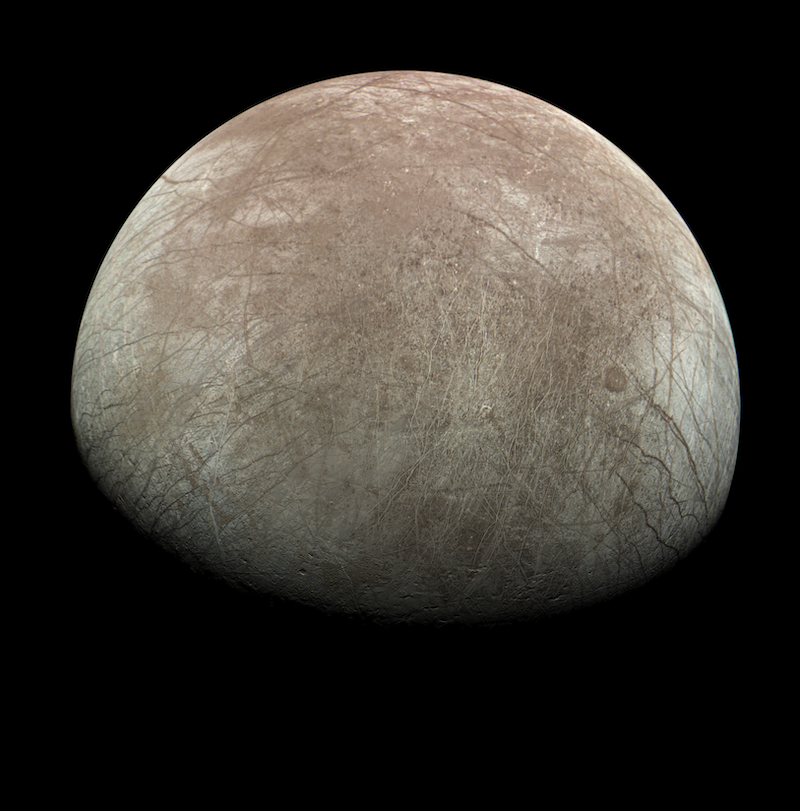
- NASA's Juno mission has provided images and new details over Europa, Jupiter's oceanic moon.
- Findings Suggest Moon's Ice Sheet Floats on Ocean and can move in a process called true polar shift.
- The images also reveal more evidence of earlier water vapor plumes. which left cryovolcanic deposits on the surface of Europa and places where watery brines may have reached the surface.
Space fans eagerly await the next Europe Clipper mission, which will allow us to take a closer look so far Europe, Jupiter's intriguing ocean moon. It will be released next fall. Meanwhile, scientists have been analyzing some new high-definition images of the Juno spacecraft, which has been orbiting Jupiter since 2016. NASA saying on May 15, 2024, that Juno did not detect any active liquid plumes on Europa, like those we see on Saturn's moon. Enceladus. But newly released images support the hypothesis that Europa's crust is floating freely in an ocean below. And they show signs of ice volcano deposits (cryovolcanoes) on the surface due to possible previous water vapor columns. Additionally, there is a “disappearing crater” and an unusual “platypus”-shaped feature.
Juno obtained these images on September 29, 2022. They are the closest yet to Europe. He peer reviewed The results are presented in two new articles, one in The Planetary Science Magazine (March 21, 2024) and the other in JGR Planets (December 22, 2023).
He JunoCam The instrument took four of the images and the Stellar Reference Unit (SRU) obtained an image. Juno came within 355 kilometers (220 miles) of the moon's icy surface.
Free floating ice sheet
A big finding is that the images support the theory that Europe has experienced true polar journey. The theory states that Europa's ice crust floats freely on the ocean. That means the ice sheet can move. The images showed irregularly distributed steep-walled depressions 20 to 50 kilometers (12 to 31 miles) wide. The depressions look like large ovoid pits that scientists have previously seen in images from elsewhere in Europe.
Candy Hansen is the lead author of the first paper, at the Planetary Science Institute in Tucson, Arizona. She saying:
True polar drift occurs if Europa's icy shell becomes decoupled from its rocky interior, resulting in high levels of stress in the shell, leading to predictable fracture patterns. This is the first time these fracture patterns have been mapped in the Southern Hemisphere, suggesting that the true effect of polar drift on Europa's surface geology is more extensive than previously identified.
Disappearing crater
Gwern Crater was thought to be one of the few craters visible on the surface of Europa, about 13 miles (21 km) in diameter. But new images of Juno revealed that this is an illusion. As Hansen explained:
Gwern Crater no longer exists. Once thought to be a 13-mile-wide impact crater, one of Europe's few documented impact craters, Gwern was revealed in JunoCam data as a set of intersecting ridges that created an oval shadow. .
As a result, the number of known craters larger than one kilometer in Europe is now 40 instead of 41.
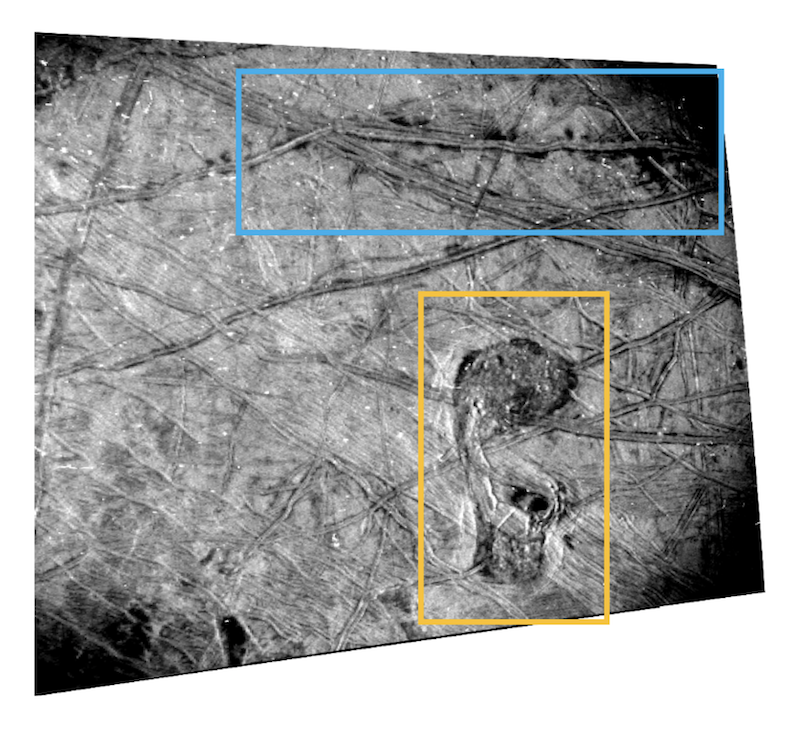
The platypus
One of the intriguing features seen in the images is nicknamed the Platypus, given its shape. It is 37 kilometers (23 miles) wide by 68 kilometers (42 miles) long and geologically younger than the surrounding terrain. It is an area of chaotic terrain, with mounds, ridges, and dark reddish-brown material within. The “torso” and “beak” are connected by a “neck” that is fractured. There are also many blocks of ice ranging from 0.6 to 4.3 miles (1 to 7 km) wide.
Researchers said this may be an area where salt water from the bottom has reached the surface. Paper fixed:
Although his topographic The context is not well understood due to the absence of stereo for this region, our morphological findings of shape from shading and visual interpretation are consistent with multiple predictions made by the fused lens model for chaos formation. That model predicts the presence of subsurface fluid and ongoing formation activity in features where surface ice sinks and blocks of ice float beneath the surrounding terrain.
Plume deposits in images of Europe?
Scientists have previously seen signs of columns of water vapor on Europa, similar to those on Saturn's moon Enceladus. However, they appear to be smaller and less frequent. Another feature of the Juno images supports the plume hypothesis. It is a set of double ridges flanked by dark spots, about 31 miles (50 km) north of the Platypus. It is an ideal target for NASA's upcoming Europa Clipper mission and ESA's icy moons of Jupiter (Juice) mission. Heidi BeckerSRU co-principal investigator at NASA's Jet Propulsion Laboratory in Southern California said:
The SRU image is a high-quality baseline for specific locations that NASA's Europa Clipper mission and ESA's (European Space Agency) Juice mission can target to look for signs of change and brine.
Juno did not detect any signs of current plume activity during its observations. However, that does not mean that eruptions are not occurring, as the document points out. noted:
However, an eruption would have to occur at just the right length (limb or terminator) and at just the right time Juno flew by, so the probability of detection was never very high.
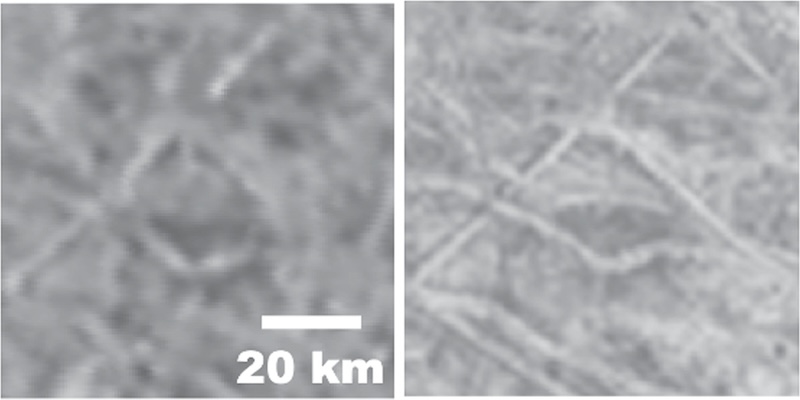
Europe Clipper and Juice
Europa Clipper, as its name suggests, will focus on Europa and perform numerous close flybys of the Moon. It will reveal more details about Europa's surface and subsurface ocean. It will launch later this year and arrive in 2030.
ESA's Jupiter Icy Moons Explorer (Juice) is already on its way to Jupiter, launching on April 14, 2023. It will arrive at Jupiter in July 2031. Unlike Europa Clipper, it will study Jupiter, its rings and numerous moons, focusing on the largest moon, Ganymede.
Juno has already made 61 close flybys of Jupiter itself, the last of them on May 12, 2024. The next will be on June 13, when the spacecraft will also approach within 29,300 km (18,200 miles) of the volcanic moon. I. Launched on August 5, 2011, Juno has been exploring Jupiter and its moons since 2016. Its primary mission is to study the atmosphere and interior of the giant planet, but it also sometimes performs flybys of some of the largest moons.
Bottom line: NASA has released some images of Europa, Jupiter's ocean moon. They provide new clues about the moon's ice sheet and other interesting surface features.
Source: JunoCam images from Juno Europe
Read more: Europe has enough oxygen to sustain a million people
Read more: A message to Europe from the people of Earth







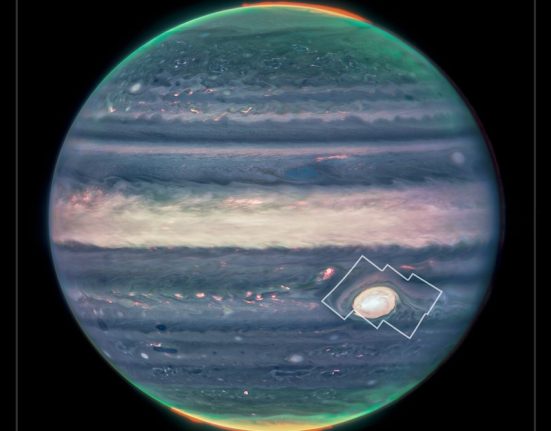
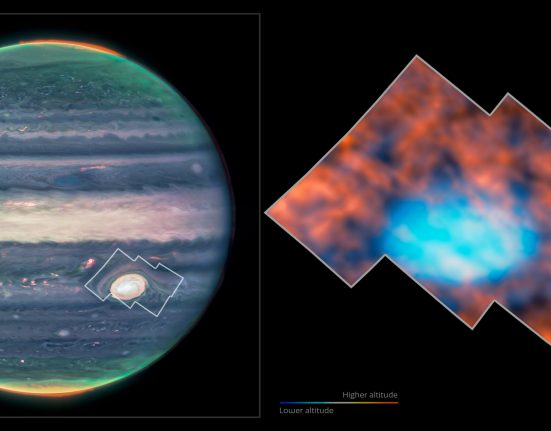
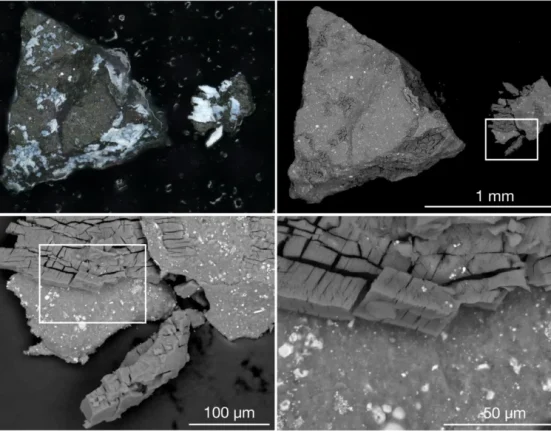



Leave feedback about this